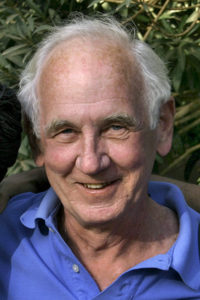The Primary Achievement of the 25th Anniversary Conference
As president of the RPCV of Washington, D.C., Roger Landrum (Nigeria 1961-63) was the major force in creating the 25th Anniversary Conference. I asked Roger to write from his perspective about the event, and I am pleased to publish his comments here. Thank you, Roger. Note JC
The Primary Achievement of the 25th Anniversary Conference
The most enduring impact of the 25th anniversary conference was engaging the growing number of Returned Peace Corps Volunteer as an organized force supporting the three goals of the Peace Corps. Those of us who initiated and organized the anniversary conference were determined to build more effective RPCV organizations. The group of Iowa RPCVs who created the National Council of RPCVs (now the NPCA) made an important breakthrough in 1979 by establishing a framework for an independent national alumni organization, but that organization had only a small membership and lacked momentum. The 1986 anniversary conference, with its gathering of 5,000 RPCVs, jump-started the national alumni organization. It also stimulated a proliferation of local and country of service RPCV organizations from a handful to over 100.
The conference gathering showed what RPCVs can achieve when they become better organized behind a
vision wider than the Peace Corps agency. President John Kennedy and the founders of the Peace Corps envisioned an expanding impact by hundreds of thousands of Peace Corps alumni on American society and institutions with their unique overseas experience of national service. But until the 25th anniversary that impact had been informal and unorganized. The conference changed all that, generating income of $404,000 ($170,000 from registrations, another $50,000 from foundation and World Bank grants, and $164,443 from conference-related activities)). Substantial profits of income over expenses were saved. Consideration was given by the conference organizers to creating a fresh national entity to achieve the goals coming out of the conference but after negotiations with the board of the National Council the substantial profits from the conference were turned over to that organization in exchange for the board’s agreement to open an office in Washington, hire full time staff, publish Worldview magazine, administer the Shriver Award, and conduct a membership drive. Timothy Carroll became the first salaried executive director. The dues paying membership, less than 1,500 before the anniversary conference, rapidly grew to 4,500 by the end of 1987, with $94,365 from dues income and $126,491 income from foundation grants. Equally important the handful of local and country of service RPCV groups publicized at the anniversary conference proliferated.
The RPCV infrastructure growing out of the 25th anniversary conference evolved into today’s NPCA and its affiliate groups. It is probably fair to say that some are disappointed the NPCA has not achieved more, but the key lesson from the conference remains: Peace Corps alumni can achieve big things when mobilized around visionary goals and an agenda of specific projects RPCVs want to be part of. The NPCA has become an influential advocate with Congress for more robust Peace Corps budgets. The most important current alumni project is Alana DeJoseph’s independent Peace Corps documentary, The Towering Task, which has already raised $200,000 in support from alumni for the purpose of informing the American public, to which the Peace Corps has become largely invisible, about the achievements of the Peace Corps over 55 years. Nothing could be more important with the current president proposing to reduce the Peace Corps budget.
The task of building a more impactful NPCA remains. Although the NPCA claims all 220,000 RPCVs as members, the dues paying membership, less than 5% of RPCVs, generates only $160,000 in annual income for NPCA. Imagine what an NPCA of 25,000 dues-paying members, financing an annual agenda of selected projects like The Towering Task, might achieve for the ideals of the Peace Corps and the alumni community. Brilliant speeches by Shriver, Moyers, and others at the anniversary conference, including Loret Ruppe, deserve being remembered but activating a portion of RPCVs behind the hard work of building alumni organizations was the lasting achievement of the 25th anniversary conference.
Roger Landrum today is a fine art photographer who has achieved international recognition. In 2008 he was awarded a Prix de la Photographie Paris. He was a 1st place winner in the 2008 International Photography Awards. The IPA judges selected his work for recognition again in 2009. Roger’s interest in photography began as a PCV in Nigeria. “Living in a different culture made me aware of the distinctive visual aspects and color sensibilities expressive of other traditions.”
His Nigeria photographs have won several awards and were published as a book. The prints are now sought out by photography collectors.
As founder and former CEO of Youth Service America, he also played an influential role in establishing the policy framework and securing passage of the National And Community Service Acts of 1990 and 1993.
Landrum lives in Washington, DC. and can be reached by email at: ysintl


Thanks to Roger, the Iowa RPCVs and everyone else involved in helping the establishment of NPCA.
While I was too far away to attend the 25th, all of us owe much gratitude to Roger Landrum for his leadership in creating this conference and the organization that thousands of us continue to work hard to build. Yes, thank you, Roger.
This means a lot coming from you David. Thank you for your tenure brilliantly producing WorldView after you took over from Jeff Drumtra, the founding editor following the 25th. Roger